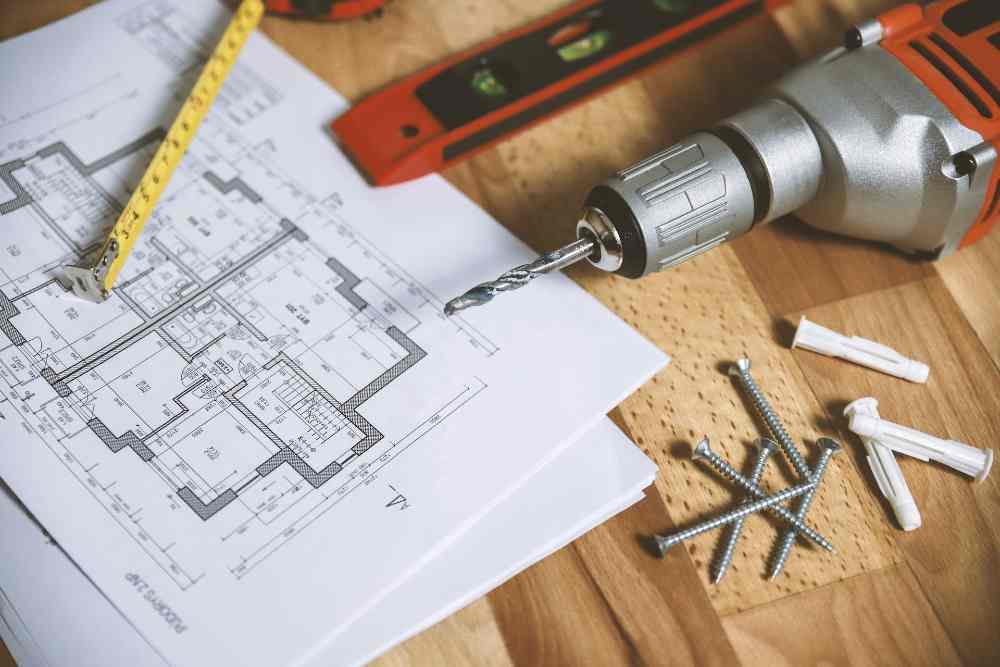
The Complete Guide to Preparing Your Home for Sale
Preparing your home for sale involves a critical step: inspecting it thoroughly. This inspection holds particular significance, especially in regions like Portland, Oregon, known for its varied weather patterns—ranging from heavy rains and occasional snow to hot summers.
Realtor.com reports that just 10% of home inspectors are hired by sellers. Financial factors might explain this trend. Home inspections usually cost between $200 and $500. Since pre-inspections are optional, many opt not to spend this money. However, these pre-inspections allow sellers to fix issues beforehand, providing buyers with a property in good condition.
In this blog, we’ll explore signs indicating your home might need renovations before listing it for sale, helping you navigate this important phase of the selling process.
Evaluating the Exterior
Before listing your home, a thorough evaluation of the exterior is essential. Here’s what to look for:
– Siding Wear and Tear: Check the siding for cracks, peeling paint, or rot as these signs often indicate potential water damage that needs addressing. Repairing these issues can improve the home’s overall appeal and prevent further deterioration.
– Roof Condition: Inspect the roof for missing shingles, signs of aging, or potential leaks that might lead to water damage inside the house. Addressing these issues beforehand can save time during the selling process and reassure potential buyers about the home’s condition. This becomes even more important in areas like Portland, where the weather can get extreme. Just look up Portland Roof Replacement experts near me online and find reliable experts to help you with the repairs.
– Foundation Issues: Look for cracks or unevenness in the foundation, as these could indicate structural problems. Addressing foundational issues early can prevent more extensive and expensive repairs down the line.
– Debris Removal: When cleaning out areas like basements or attics, consider renting a dumpster. The ideal size for small cleanouts is typically a 10-yard dumpster, which is perfect for minor renovations or clearing out clutter, making the process smoother and more efficient.
Examining the Interior
Assessing the interior of your home is crucial before putting it on the market. Here are key areas to focus on:
– Wall and Ceiling Stains: Investigate for water stains, which might hint at plumbing or roof issues that need immediate attention. Fixing these problems can improve the aesthetics of the home and prevent further damage.
– Flooring Condition: Check the floors for damage, such as warping or significant wear, as these issues can detract from the home’s value. Repairing or replacing damaged flooring can enhance the overall appeal of the property.
– Appliance Functionality: Test all appliances to ensure they are in working order, providing buyers with confidence in the functionality of the home. Repair or replace malfunctioning appliances to prevent potential buyer concerns.
Reviewing the Plumbing and Electrical Systems
The functionality of plumbing and electrical systems significantly impacts a home’s value. Here’s what to inspect:
– Leak Detection: Look for signs of leaks or water damage around sinks, toilets, or pipes, addressing them promptly to avoid further damage or potential mold issues. Repairing leaks can reassure buyers about the home’s maintenance.
– Electrical Panel and Outlets: Ensure the electrical panel is up-to-date and test outlets for functionality, as outdated systems could pose safety hazards. Upgrading or repairing electrical systems with the assistance of a qualified Cary electrician, for instance, can increase the home’s appeal to potential buyers.
– Water Heater Condition: Assess the age and condition of the water heater, considering replacement if it’s outdated or showing signs of malfunction. A well-functioning water heater adds value to the home and alleviates concerns for buyers.
Assessing Energy Efficiency and Insulation
Evaluating energy efficiency is crucial and can be a significant selling point. Consider these aspects:
– Window and Door Seals: Check for drafts or worn seals in windows and doors, which can affect energy efficiency. Upgrading these seals can improve the home’s insulation and reduce utility costs for potential buyers.
– Insulation Quality: Assess the insulation in the attic and walls for proper coverage, considering upgrades if needed to improve energy efficiency. Better insulation not only saves energy but also enhances comfort, making the home more attractive to buyers.
– HVAC System Performance: Ensure heating and cooling systems function optimally, as inefficient systems can be a red flag for buyers. Servicing or replacing outdated systems can improve the home’s appeal and value.
Checking for Pest Infestations
Detect and address pest issues before selling your home. Look out for these signs:
– Termite Damage: Inspect wooden structures for signs of termite infestation or wood decay, as these can significantly affect a home’s structural integrity. Treating termite issues promptly can prevent further damage.
– Rodent or Insect Presence: Look for droppings, gnaw marks, raccoon poop in attic, or nests indicating unwanted pests, as these can turn away potential buyers. Addressing pest problems before listing the home is crucial for a smoother sale process.
– Mold and Mildew: Check damp areas for signs of mold or mildew growth, as they can attract pests and pose health risks. Removing mold and addressing the source of moisture can improve the home’s overall condition.
Finalizing with Curb Appeal Enhancements
Enhancing curb appeal can significantly impact your home’s market value. Consider these improvements:
– Landscaping Upkeep: Maintain the landscape by trimming bushes, mowing the lawn, and enhancing garden beds for a well-presented exterior. A neat landscape creates a positive first impression for potential buyers.
– Exterior Touch-ups: Consider a fresh coat of paint or minor repairs to enhance the overall appearance of the home’s exterior. These touch-ups can make a big difference in how the property is perceived.
– Entryway Appeal: Spruce up the entryway with clean doormats, potted plants, or a welcoming touch to create an inviting entrance for potential buyers.
Ensuring Safety Measures
Prioritizing safety measures in your home is pivotal for both sellers and prospective buyers. Here’s what to consider:
– Smoke and Carbon Monoxide Detectors: Check and replace batteries in smoke and carbon monoxide detectors. Ensuring these are functional is not only a safety necessity but also a selling point.
– Handrail Stability: Inspect handrails on stairs or balconies for stability and sturdiness. Reinforcing or repairing any wobbly or loose handrails enhances safety for potential buyers.
– Adequate Lighting: Ensure adequate lighting inside and outside the house, especially in dark areas or walkways. Proper lighting not only adds to the home’s safety but also contributes to its overall appeal.
Conclusion
Preparing your home for sale involves a detailed inspection and necessary renovations to ensure it’s in top condition. Evaluating both the interior and exterior, addressing plumbing, electrical, and energy efficiency issues, checking for pest infestations, enhancing curb appeal, and prioritizing safety measures are crucial steps. By taking these measures, sellers can present a well-maintained, safe, and appealing property to potential buyers, increasing the chances of a smoother and more successful sale process.


